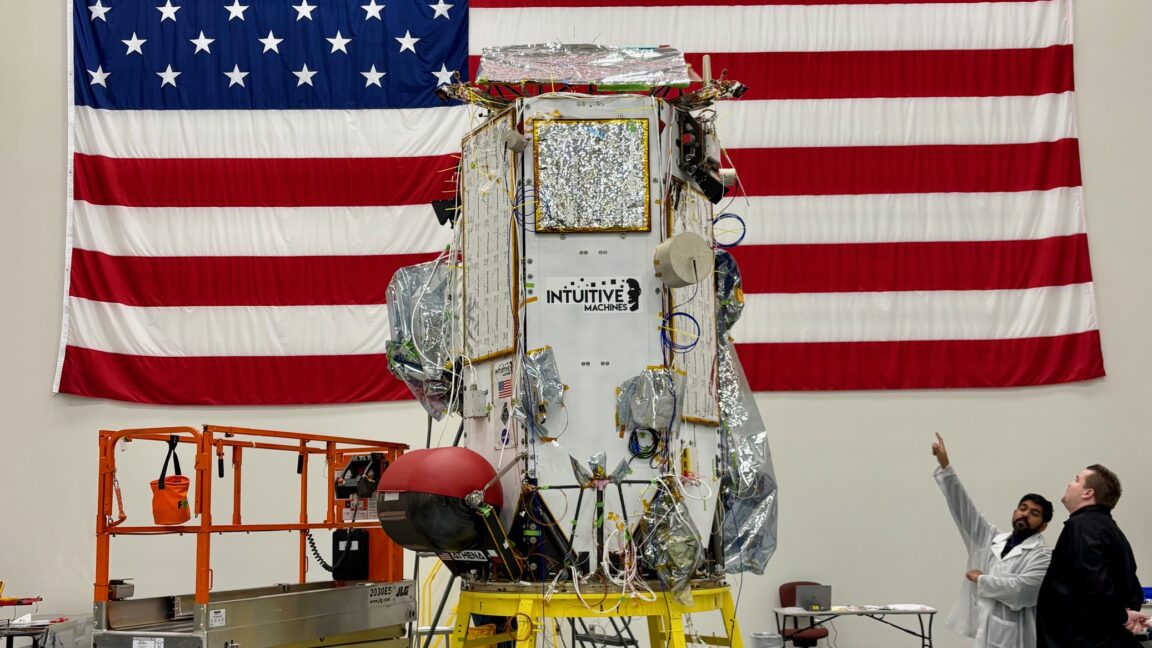
Five years ago, a small company in Houston named Intuitive Machines had just 30 employees, a couple of 3D printers, and a few soldering irons.
Oh, and it had some big dreams. The company’s founders wanted to open a business on the Moon.
On Wednesday morning, when I drove into the company’s new headquarters at Spaceport Houston, there were no spaces to park in a lot filled with hundreds of cars. Inside, the offices were buzzing. And a large integration hangar was packed with hardware: two lunar landers, two lunar rover mock-ups, a hopper, and other spaceflight vehicles.
This is what can happen when NASA strikes the right balance with the commercial space industry.
In May 2019, NASA issued the first three awards as part of its Commercial Lunar Payload Services Program to pay private companies—in this case, Astrobotic, Orbit Beyond, and Intuitive Machines—to deliver scientific payloads to the lunar surface. It’s been a long road since then. Astrobotic’s first mission a year ago failed on the way to the Moon. Orbit Beyond dropped out. But Intuitive Machines largely succeeded, putting its Odysseus lander on the Moon, albeit sideways, after its altimeter failed. For the first time ever, a private company successfully made a soft landing on the Moon.
Now, it’s going to try again.
To the Moon in a week
“For us, it’s been a real journey,” said the chief executive of Intuitive Machines, Steve Altemus, as we stood a few feet away from the company’s second lunar lander, which will soon be shipped to a launch site in Florida. “In February of 2023, we went public, and that was a huge milestone for us in terms of growing up. In February 2024, we landed on the Moon, and everything has changed since then. And here we are again, ready to launch our second mission in February 2025.”
The company’s lander, named Athena, is presently scheduled to lift off on a dedicated Falcon 9 rocket at the end of February, Altemus said. The current launch date supports a lunar landing about a week later, on March 6 or 7, near the south pole of the Moon. The goal is to have about 10 days in sunlight before the lunar night sets in.

